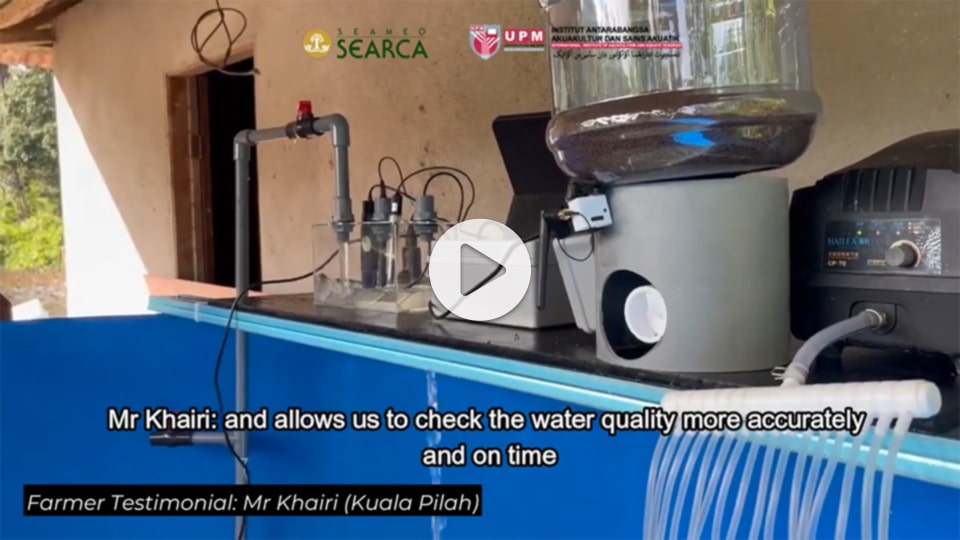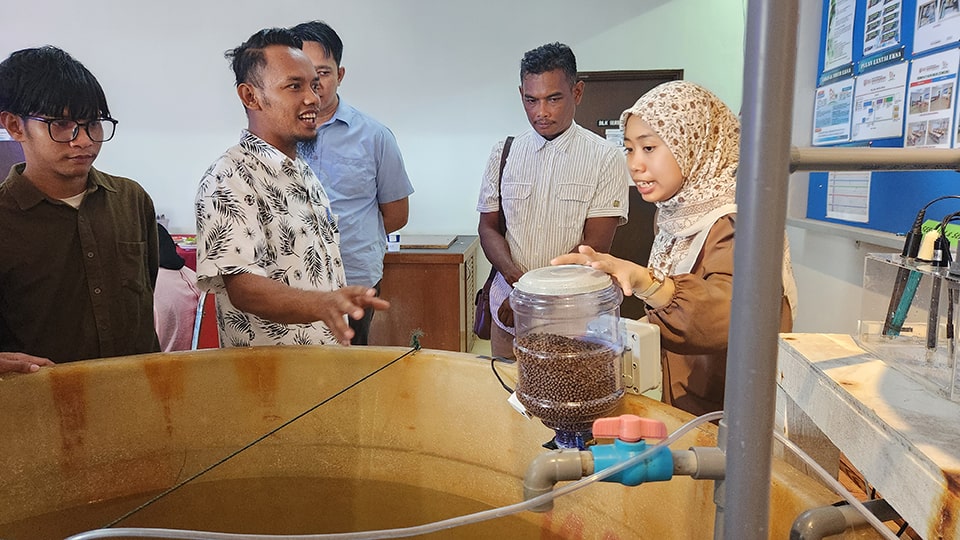 Farmers witness demonstration of intelligent fish feeder at the International Institute of Aquaculture and Aquatic Sciences (I-AQUAS), Universiti Putra Malaysia
Farmers witness demonstration of intelligent fish feeder at the International Institute of Aquaculture and Aquatic Sciences (I-AQUAS), Universiti Putra Malaysia
An aquaculture system powered by artificial intelligence (AI) is helping small-scale fish farmers in Malaysia overcome pressing challenges in their operations. The installation of automated feeders in fish tanks in Negeri Sembilan has reduced time spent on manual feeding by 70% and cut feed waste by 20%. For farmers, this means saving at least six hours of labor each week and earning more from better feeding efficiency.
Dr. Ahmad Fikri Abdullah from Universiti Putra Malaysia led the pilot deployment of smart fish feeders through the Grants for Research towards Agricultural Innovative Solutions (GRAINS) of the Southeast Asian Regional Center for Graduate Study and Agriculture (SEARCA).
"This project has effectively showcased the power of integrating cutting-edge technologies to drive positive change in the aquaculture sector, paving the way for a more sustainable, efficient, and prosperous future for small-scale tilapia farmers," reported Dr. Fikri.
Using AI-based computer vision to estimate fish biomass, the fish feeder automatically dispenses feed in precise amounts. The feeder is fitted with IoT sensors to monitor water conditions like pH, ammonia, and oxygen levels, which enables smart, real-time decision-making for optimal fish growth.
"In my opinion, it is good because it can make the work easier, and can speed up fish growth," said Mr. Khairi, one of the farmers who tested the smart fish feeder. He grows tilapia fingerlings in round fiberglass tanks measuring seven feet in diameter and sells them across Peninsular Malaysia.
In developing the fish feeder, Dr. Fikri's team adjusted feed sizes to farmer requirements, with bigger pellets for grow-out tilapia. Mr. Fendi, who fulfills advance orders for grow-out tilapia, has such a feeder installed in his rectangular cement tank.
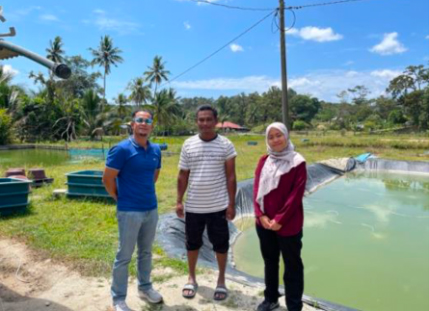
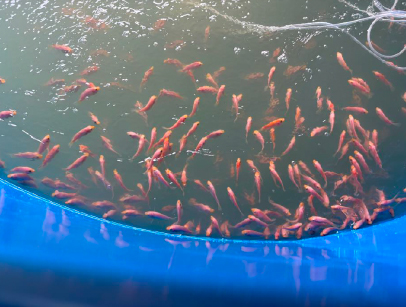
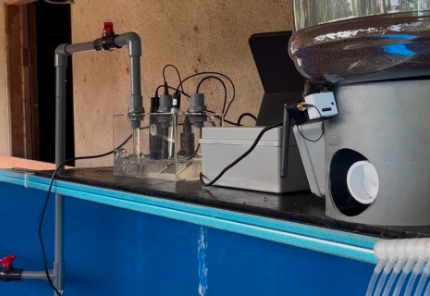
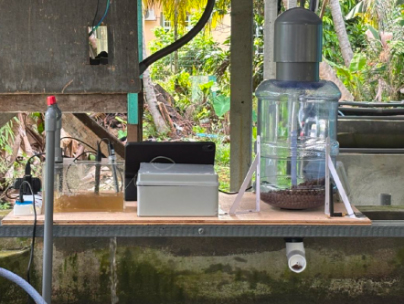
Smart fish feeders are installed in farmers' tanks, resulting in labor savings and better feed efficiency.
He shared the benefits of the system: "It helps to improve feeding efficiency, reduce waste, and monitor in real time. Moreover, it enables the farmer to make accurate decisions and reduce operational cost."
What sets the system apart is its accessibility. The feeder was built using locally sourced materials, including repurposed water bottles for hoppers and 3D-printed parts for the dispensing unit. The device is both cost-effective and reliable.
Building on the early success of the smart fish feeder, Dr. Fikri's team intends to monitor and quantify the long-term economic returns for farmers. They are planning to add features like disease detection and automated water quality control, turning the feeder into a comprehensive farm management platform.
The future of aquaculture is not just about bigger harvests. The AI-based automated fish feeder is about smarter systems that work for the people who need them most.
To know more about the smart fish feeder, watch this video:
https://www.youtube.com/watch?v=QPrXZOSf9nc
